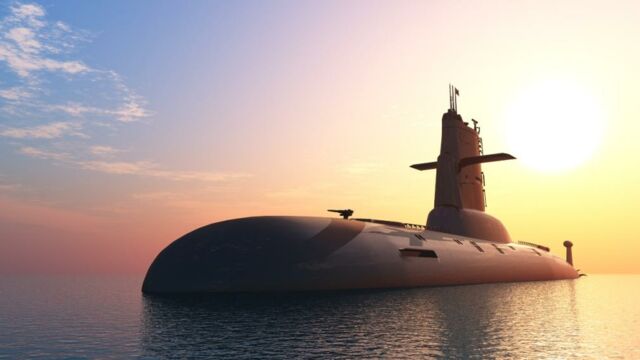Submarines are true marvels of technology, with multiple functions: they can be used to gather data thanks to their stealth, to attack enemy structures if they are equipped with devastating weapons, like the Russian Belgorod... or they can be used for scientific or touristic purposes. But what happens when a submersible breaks down while underwater?
Discover our latest podcast
Submarines are fascinating. So much so that a private company is offering its customers the chance to dive to the Titanic wreck in a tiny submersible, to explore it while they still can, as it will have disappeared completely by 2030. OceanGate Expeditions offers its customers a unique kind of underwater adventure, but these expeditions aren't for everyone. First of all, the ticket is not cheap, costing $250,000 for an 8-day trip.
But one of their so-called unsinkable boats is nowhere to be seen. Five people are now missing, as they are reportedly stuck inside their submersible. The company estimates they had 96 hours of oxygen left when they disappeared on Sunday morning, four days ago.
World War II submarines didn't stay underwater for long
Submarines aren't exactly a new invention. If we take into account the conceptual machines built in the time of Alexander the Great, which could reachan impressive depth of 20 metres...their history can be traced back to Antiquity.
But submarines didn't really boom until the First and Second World Wars when they became key elements in armed combat. But submerging creates a problem: the lack of oxygen. So how long can you stay underwater if you are locked inside a submarine?
Technology has come a long way since the 1940s. During the Second World War (and the middle of the Cold War), most submarines could only remain temporarily submerged. In any case, their immersion was only occasional: they carried the air from their hulls before diving, and this air was hardly recycled at all, so it wasn't safe to breathe in. After a while, the air became toxic due to the excessive presence of carbon dioxide.
According toEurodoc, a World War II submarine could stay underwater for 12 to 48 hours before having to surface. But that's all changed with a new invention...
Me consuming all the titanic submarine content I possibly can for the past 24 hours: pic.twitter.com/Ov52GmRXTA
— Kelley 🌙 (@kelleymcgrathx) June 21, 2023
Read more:Russian submarine with nuclear 'super-weapon' resurfaces, here's what we know
Nuclear submarines now produce their own oxygen
A few decades later, the propulsion methods of the most sophisticated submarines have changed. They are now equipped with naval nuclear propulsion, which significantly increases their autonomy.
These submersibles have also gained a new superpower: they can generate their own oxygen. They have several ways of doing this, such as electrolysis. As Tappity explains:
Well, submarines have special machines that make oxygen from ocean water. They use a process called electrolysis, which means using electricity to break apart H20 molecules to get oxygen.
They can also produce oxygen from seawater, as Stephan Meunier of Naval Group explains to Le Point:
Unlike the ISS, we have plenty of energy thanks to the nuclear reactor, as well as water at our disposal: it is therefore possible to produce oxygen from seawater, through hydrolysis.
Carbon dioxide is filtered out, and thanks to these techniques, a submarine can stay submerged for a very long time. Eurodoc says some nuclear-powered submarines can remain underwater for about three months.
Most U.S. submarines are nuclear powered and can stay submerged for long periods of time typically about two to three months. Some older diesel-powered submarines can only stay submerged for a few days or weeks.
Read more:China issues stark warning to UK, US, and Australia over their latest move
A small submarine only has a few days' supply of oxygen
The problem is that not all submarines are nuclear-powered, and not all are capable of producing their own oxygen. Such is the case of Titan, the submarine which went missing while going to visit the Titanic wreck. It has limited oxygen reserves.
According to Insider:
The vessel, called the Titan, is 22 feet long and typically contains four days of emergency oxygen for a crew of five, including the pilot.
This means that, according to the most optimistic forecasts, the submarine will have oxygen until Thursday afternoon at the most.
BREAKING: Banging sounds were heard Tuesday during the search for the missing Titanic sub, indicating "continued hope of survivors," according to an internal government memo. At this time the 5 passengers on board have until Thursday morning before they run out of air. pic.twitter.com/Dghd5L0Dc4
— Daily Loud (@DailyLoud) June 21, 2023
Read more:This is how your breathing changes right before you die
This article has been translated from Gentside FR.
Sources used:
Eurodoc: how long can a submarine stay underwater
Tappity: How Do Submarines Work?
Insider: The Titanic tourist submersible has between 70 to 96 hours of oxygen left if it's still intact, the US Coast Guard says
Le Point: Astronautes, sous-mariniers : comment ils purifient leur air















